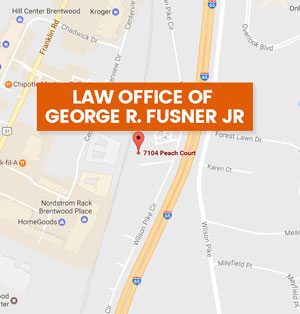Warm weather during the summer months results in more and more motorcycle owners taking to the roads. Motorcycle accidents are a very real threat with potentially deadly effects for riders who must navigate our roadways with constant vigilance towards cars, trucks and other hazards.
Early last month an accident in Nashville involving a motorcycle resulted in the death of a Kentucky woman. Like so many deadly motorcycle accidents, this incident involved an automobile being driven by a woman who paid very little attention to road safety principles. Officers said Krista Hindahl, 42, was riding on a Harley Davidson motorcycle being driven by her husband, Jeffrey Hindahl, 49. The couple was headed eastbound on Highway 100 near the Loveless Café when the driver of a PT Cruiser, Shirley Tucker, 58, made a prohibited left-hand turn in front of them. Officers said the motorcycle crashed into the driver’s side of the car, and both riders were thrown onto the roadway. Police said Krista Hindahl was run over by the car and died at the scene, while her husband was transported to Vanderbilt in stable condition.
So what are the main causes of motorcycle accidents?
The only major work done on this subject in the USA is the Hurt Report, published in 1981 with data collected in Los Angeles and the surrounding rural areas. There have been longstanding calls for a new safety study in the US, and Congress has provided the seed money for such a project, but as yet the remainder of the funding has not all been pledged.
The Hurt Report concluded with a list of 55 findings, as well as several major recommendations for law enforcement and legislation. Among these, 75% of motorcycle accidents involved collision with another vehicle, usually a car.
Other notable findings in the Hurt report (quoted below) were:
- 75% of accidents were found to involve a motorcycle and a passenger vehicle, while the remaining 25% of accidents were single motorcycle accidents.
- “In the single vehicle accidents, motorcycle rider error was present as the accident precipitating factor in about two-thirds of the cases, with the typical error being a slide-out and fall due to overbraking or running wide on a curve due to excess speed or under-cornering.”
- “Almost half of the fatal accidents show alcohol involvement” and “injury severity increases with speed, alcohol involvement and motorcycle size.”
- In the multiple vehicle accidents, the driver of the other vehicle violated the motorcycle right-of-way and caused the accident in two-thirds of those accidents.
- The report’s additional findings show that the wearing of appropriate gear, specifically, helmets and durable garment, mitigates crash injuries substantially.
- “Vehicle failure accounted for less than 3% of these motorcycle accidents, and most of those were single vehicle accidents where control was lost due to a puncture flat” and “Weather is not a factor in 98% of motorcycle accidents.”
- “The failure of motorists to detect and recognize motorcycles in traffic is the predominating cause of motorcycle accidents… Conspicuity of the motorcycle is a critical factor in the multiple vehicle accidents, and accident involvement is significantly reduced by the use of motorcycle headlamps-on In daylight and the wearing of high visibility yellow, orange or bright red jackets.”
- Share the road. A motorcycle has the same privileges as any other vehicle on the road. Be courteous and give the motorcyclist a full lane of travel.
- Look out. Look for motorcyclists on the highway, especially at intersections when a cyclist may be making a turn or changing lanes. Clearly signal your intentions.
- Anticipate a motorcyclist’s maneuvers. Obstructions (debris, potholes, etc.) that you may ignore or not notice can be deadly for a motorcyclist. Anticipate their possible evasive actions.
- Allow plenty of space. Do not follow a motorcycle too closely. Allow enough room for the motorcyclist to take evasive actions.
- Make yourself visible. Choose protective gear that provides visibility and protection. This includes wearing bright colors. If riding at night, wear clothing with reflective materials.
- Allow space. Position your bike in the lane so that you can be seen. Allow additional space for emergency braking and room to maneuver. Avoid riding in a motorist’s blind spot. Make lane changes gradually and use appropriate signaling.
- Never share a lane beside a car. A driver may be unaware of your presence. Most drivers are looking for larger vehicles, not motorcycles.
- Clearly signal your intentions. Use turn signals before changing lanes and never weave between lanes.
- Wear protective gear. • Helmet – Always wear a U.S. DOT-approved helmet. In Tennessee it’s the law.
- Eye protection – Visibility is key to riding safely. Many motorcycles do not have windshields. Riders should protect their eyes with goggles that can shield the face from wind and debris, both of which can cause tearing and, blurred vision.
- Body Protection – Jackets with long sleeves and well-fitting abrasion resistant pants.
- Gloves – Durable gloves should be a non-slip type to permit a firm grip on controls.
- Footwear – Proper over-the-ankles footwear should be worn to help prevent injuries.
- Complete a motorcycle rider education and training course. The overwhelming majority of motorcyclists have had no formal training. Get professional training on how to be a defensive driving motorcyclist
From the legal standpoint, it is imperative that both motorist and cyclist not only obey state driving laws but also take every reasonable precaution to maintain a safe driving environment. Lawsuits stemming from accidents involving cars and motorcycles follow the same negligence principles and theories of liability as all other personal injury cases. However, such accidents usually result in far greater and serious injuries to at least on of the parties, that party is almost invariably the motorcycle rider.
For more information on motorcycle safety please visit the following websites:
http://www.nhtsa.gov/people/injury/pedbimot/motorcycle/motosafety.html and http://www.nhtsa.gov/people/injury/pedbimot/motorcycle/00-nht-212-motorcycle/appendix_a-81.html



